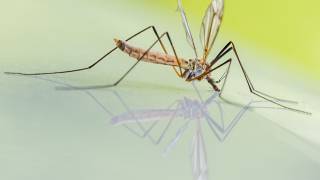Predicting Zika’s Next Hot-Spot?

A team of researchers asked, “Could the recent Zika epidemic have been predicted?”
The short answer is no.
These researchers explained that the Zika virus, like most diseases spread by mosquitoes, hinge on two variables: infected hosts and carriers.
For Zika to spread, a mosquito that’s capable of carrying the virus has to bite a person already infected. The virus then needs enough time to reproduce inside that mosquito.
Then, the infected insect has to bite an uninfected person.
This means, people play an active role in spreading diseases across borders, not just mosquitoes. Predicting human behavior is difficult, so these researchers focused on mosquitoes.
Researchers from Columbia and Princeton universities used climate data from affected regions to build a computer model that forecasts the movements of mosquitoes based upon the weather.
This model helped researchers highlight potential ‘hot spots’ for mosquito-borne disease transmission, one to three months in advance. Their model forecasts at the country level and larger regions, but not for a specific city.
They also note in their study that mosquitoes also spread dengue and chikungunya. Which means this model effectively measures risks of all three diseases, rather than just Zika.
According to the World Health Organization (WHO), the simultaneous spreading of these three arboviruses raises the possibility of co-infections in people. Indeed, several cases of dengue and chikungunya co-infections have already been reported by the WHO.
In addition, a separate study reported five different mosquito species were found to contain the Zika virus in their salivary glands.
“Both the mosquitos that transmit Zika and the virus itself are climate-sensitive,” said co-author Ángel Muñoz, a postdoctoral research associate in atmospheric and oceanic science at Princeton University.
“High temperatures generally increase the virus replication rates and also the speed of mosquito reproduction,” he explained. “The overall effect of high temperatures is an increase in the potential risk of transmission.”
There are three considerations when it comes to climate warming:
- annual temperature variation from factors like warming in the Pacific Ocean during El Niño years,
- decadal temperature swings and
- long-term temperature increases from global warming.
During 2016, all three trends were on an increased pattern.
"We had very high rates of Zika transmission where it was very warm and very dry,” said co-author Madeleine Thomson, a senior research scientist at the International Research Institute for Climate and Society at Columbia University.
“The model is not going to differentiate whether it’s Zika or dengue or chikungunya,” Thomson said. “It’s just telling you that virus transmission suitability is up.”
“We are seeing an accelerated threat from mosquito-borne diseases overall,” said Charles Ben Beard, PhD, deputy director of the Centers for Disease Control and Prevention’s Division of Vector-Borne Diseases, in a news article.
“It is very hard to determine which virus might come next. The Zika virus wasn’t on anyone’s radar screen before it became an international threat.”
“What we do know is that in this age of globalization, more viruses will be coming. We just don’t know from where or when,” Beard said.
The authors declare that the research was conducted in the absence of any commercial or financial relationships that could be construed as a potential conflict of interest. Ángel G. Muñoz, Madeleine C. Thomson, Anna M. Stewart-Ibarrn, Gabriel A. Vecchi, Xandre Chourio, Patricia Nájera, Zelda Moran, Xiaosong Yang
Funding: ÁM was supported by National Oceanic and Atmospheric Administration Oceanic and Atmospheric Research, under the auspices of the National Earth System Prediction Capability. XC was supported by the Centro de Modelado Científico's project CMC-CC-Dat-2016. This work was supported by the IRI-WHO Collaborating Center (430) Malaria Early Warning and Other Climate Sensitive Diseases.
Our Trust Standards: Medical Advisory Committee
- Could the Recent Zika Epidemic Have Been Predicted?
- An updated review of Zika virus
- Detection and sequencing of Zika virus from amniotic fluid of fetuses with microcephaly in Brazil: a case study
- An Ecological Assessment of the Pandemic Threat of Zika Virus
- Scientists can see Zika coming by tracking the climate
- Acute illness with neurological findings caused by coinfection of dengue and chikungunya viruses in a Brazilian patient
- Zika Virus in Salivary Glands of Five Different Species of Wild-Caught Mosquitoes from Mexico
- Climate Change and Health – From Science to Practice (An Encore Presentation)

























